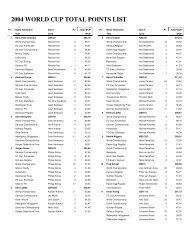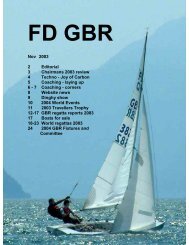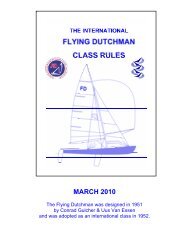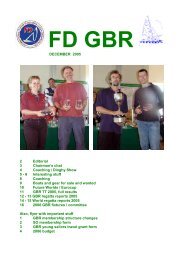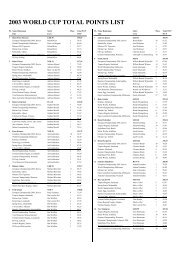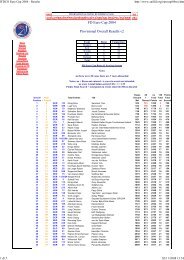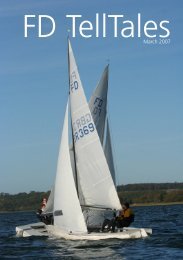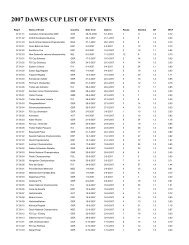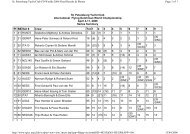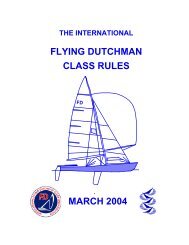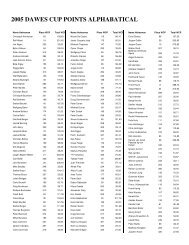A5 version - International Flying Dutchman Class
A5 version - International Flying Dutchman Class
A5 version - International Flying Dutchman Class
Create successful ePaper yourself
Turn your PDF publications into a flip-book with our unique Google optimized e-Paper software.
INTERNATIONAL FLYING DUTCHMAN CLASS RULES 2007 11<br />
Instruction: Measuring Method<br />
a. Put the stem-template with its lugs on the stem itself, not on the<br />
stem band, and the aft end of the template as much forward or aft of<br />
station 9 as the hull is respectively longer or shorter than 6057 mm<br />
overall (measured under rule 22). The gap between the template and<br />
the stem is nowhere to exceed a maximum of 6 mm. For measuring<br />
the height of the stem, the lugs must be placed on the stem itself, not<br />
on the stem band. (If the stem band is not visible 3 mm shall be<br />
accepted as such). The top of the stem must be between the height<br />
marks on the template.<br />
b. Put the transom height-angle template on the bottom of the hull<br />
next to the keelband. The top of the transom must then be between<br />
the maximum and minimum height marks on the template. Then put<br />
the template on the keel (not on the keelband) together with the stem<br />
template also on the keel. Using the triangular-shaped holes in the<br />
templates, draw a string tight between the templates. This is the<br />
baseline. The gap between the lug on the arm of the transom angle<br />
template and the string must be between 5 and 15 mm (see<br />
Measurement Plan for directions).<br />
c. Now take the H measurements between the baseline and the<br />
keel.<br />
d. When the thickness of the keelband is consistent, the stem and<br />
transom template may be put on the keelband and the H<br />
measurements must then be taken between the base line and the<br />
keelband.<br />
30. Keelbands<br />
Keelbands of metal, hardwood, plastic or glass-reinforced plastic<br />
must be fitted and must measure between 3 and 10 mm in thickness<br />
and between 6 and 15 mm in width.<br />
The keelband must run the full length of the hull along the keel<br />
including the stem. If the keelband is faired into the hull so that its<br />
width and thickness cannot be determined, the junction between the<br />
hull and the keelband must be assumed to be where the hull is<br />
6 mm wide. In the way of centreboard slot, the keelband must be<br />
duplicated and must overlap the centre keelband by not more than a



